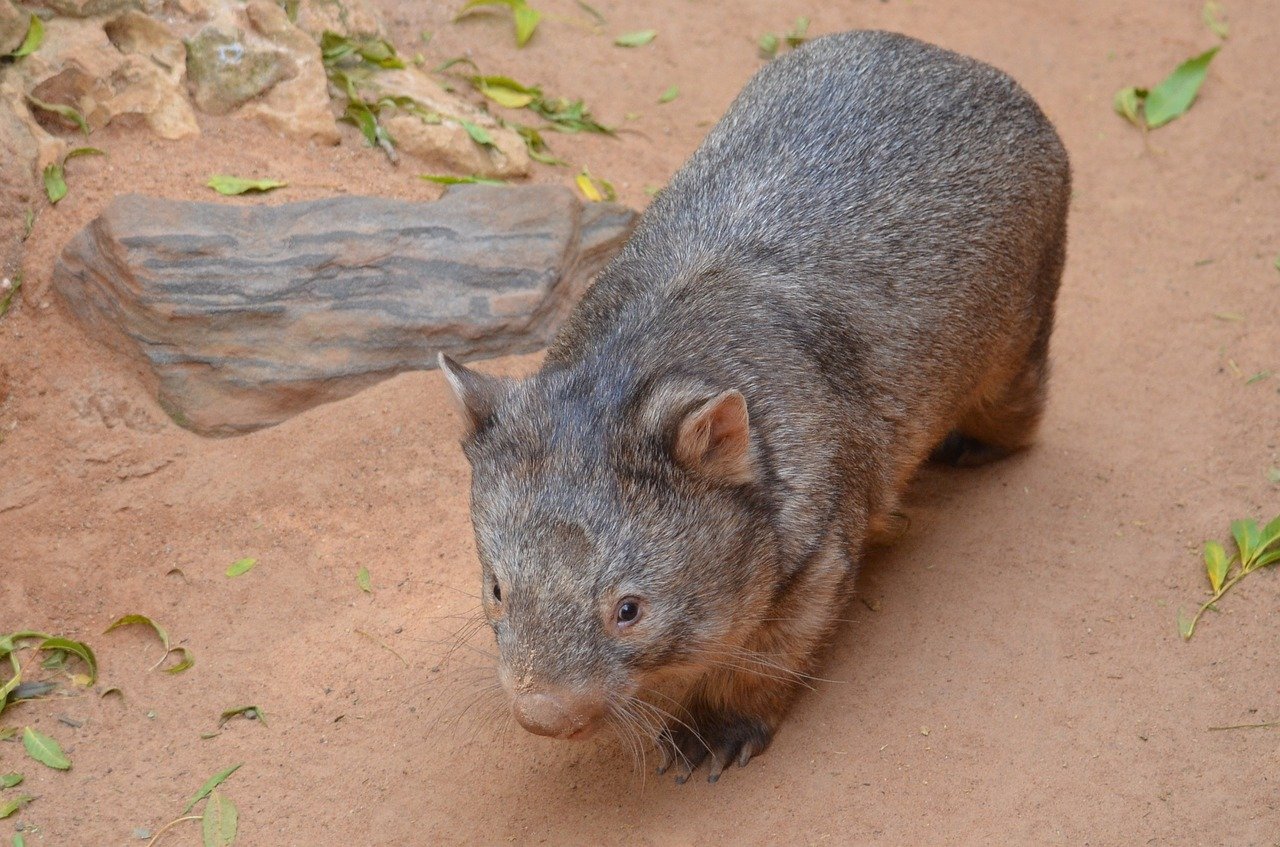Wombats are marsupials – they carry their young in a pouch – and, along with kangaroos and koalas, they are one of Australia’s most loved and unique fauna. However, their claim to fame in the scientific community may come as a surprise. They are the only animals known to produce cube-shaped poop!
For years, the true mechanism and reasoning behind this process has eluded researchers, but a new study by Australian and American scientists has started to reveal the ins and outs of this square-shaped phenomenon. In the study, fittingly published in Soft Matter researchers dissected the intestines of two wombats and found that the end 17% of their intestines were considerably thicker and stiffer than the rest. They also found that these areas contract faster than other regions of the intestine, so could be responsible for the corners observed in the resultant droppings.

So why create cube shaped droppings? That is the next question for biologists. Many think these unique faeces play a role in communication. A surprisingly large number of animals use excrement to communicate to others and wombats are no exception. At just 30cm tall it can be hard to keep an eye on the neighbours so instead these animals drop faeces in places called latrines, which are found on or next to prominent features in their habitat. It has been theorised that the cubed shape of the wombat’s droppings prevents them from rolling away, allowing them to stick around and let other wombats know exactly who is in the area.
Others have suggested that the cube shape of wombat droppings may be an adaptation to the wombat’s arid habitat in Tasmania. When water is scarce, wombats need to obtain as much liquid from their diet as possible and the strong contractions of the intestine help squeeze out every last drop to keep it in the body, which could cause the distinctive cube shape. Wombats in captivity, where there is no shortage of water and nutrients, have been found to produce rounder droppings to their wild counterparts. Nevertheless, assessing the shape of a wombat’s droppings is a quick and easy way to investigate the animal’s overall health and this is becoming increasingly important as, like many animals endemic to Australia, wombats are becoming more and more endangered.
Amazingly, the researchers of this January paper, claim that their findings may have implications in the man-made world. Current industrial processes create cubes by cutting and shaping materials. The contractions of wombat intestines could be used as a model for more efficient means of cube production, especially when using soft materials. It seems that wombats have truly revolutionised the cube!
By Catherine Upex
Header image: Pixabay

